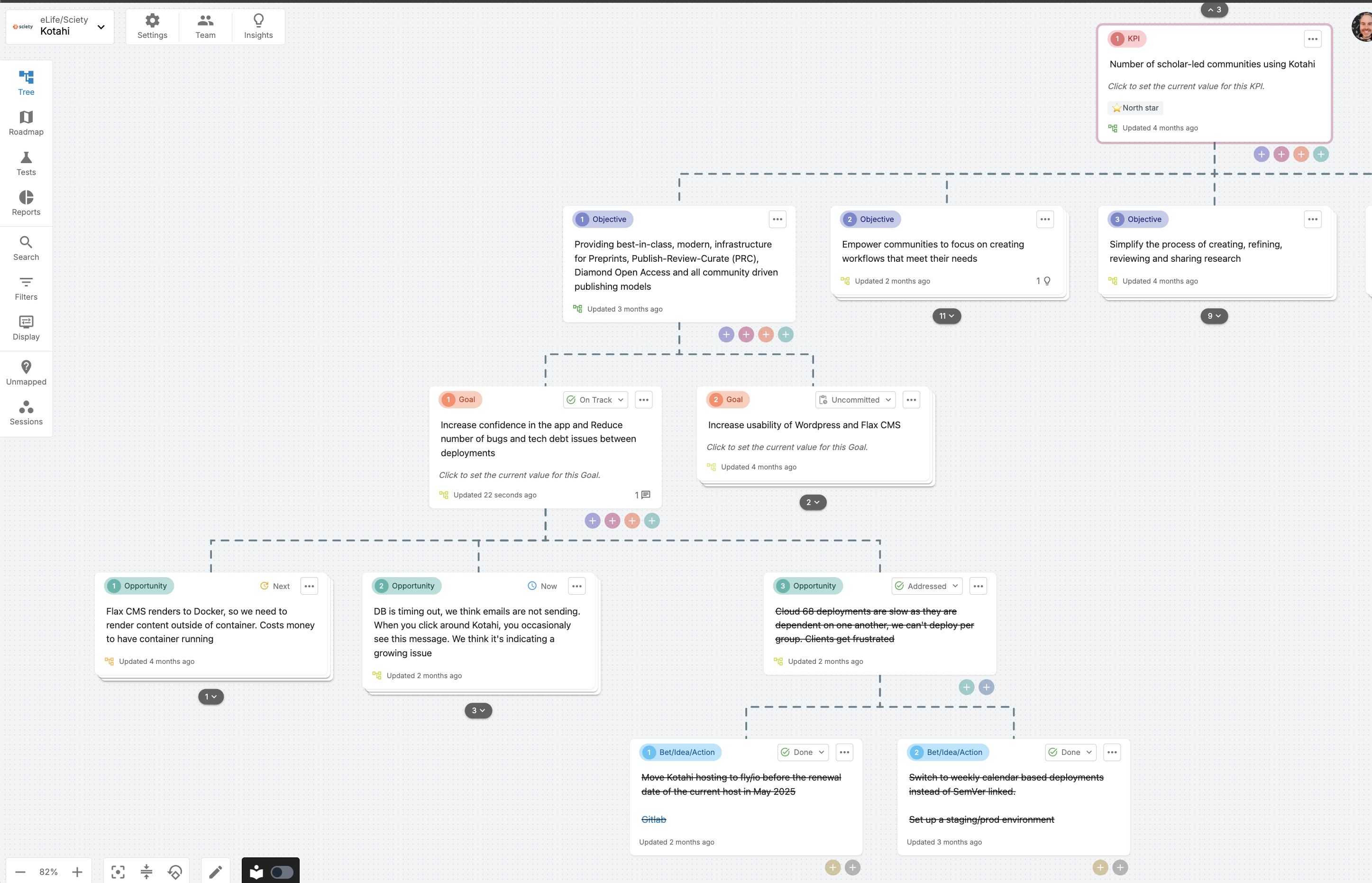Outcomes and Opportunity/Solution trees in mission-driven organisations
Kotahi is a peer review platform in the Coko ecosystem. When I joined the team there was a well scoped set of project milestones and a large backlog for delivery. This is a good approach when you are working to specific, well scoped deliverables and you know the capacity you will have in the team for the work, but the world doesn't stop turning when you have outlined all your outputs.
Priorities, people, problems and technologies all change and that can lead to waste in feature development, potentially shipping the wrong thing and also to deadlines being missed. This was problematic at Kotahi and parts of the product felt unloved which also led to suffering from technical debt and an unclear product direction (despite clear, well articulated organisational goals).
I was tasked with regaining stakeholder trust and empowering the team to focus on what was most important. Part CX manager and part delivery manager; both aspects of the wider Product Management role.
To support the team, I set out a goal mapping tree with the existing organisational objectives, opportunities and solutions to help reframe the product space and discussed this with stakeholders including the CEO and the product team.

I started working middle out as we already had a set of organisational goals. Above this I added a North Star, which in the case of Koathi is the Number of Scholarly-led communities using the platform. The metrics and numbers didn't matter at this stage as the activity is simply for visualisation.
I knew there were some pain points around confidence/trust in using the platform and that monthly deployments to a third-party provider were exacerbating this, so I articulated these as "Opportunities".
With that in place, I was able to talk about goals/outcomes... answering the question of what would we see in the world and in our product when we addressed these opportunities?
Solutions followed. The team had high confidence that these actions would lead towards our goal obtained fro reviewing engineering practices across the organisation, but until now we had not mapped them to user and business outcomes.
The OST helped us focus on outcomes over outputs and drove better strategic alignment with the leadership team. I use this way of visualising the product space, alongside a Now/Next/Later roadmap to help prioritise discovery and delivery.
Within the first month of joining the team, we were able to shift Kotah to a continuous delivery cadence of weekly and daily releases and see a reduction in bugs being reported.
Crucially this has led to increased customer confidence, which I have heard first hand in customer interviews with phrases such as "wow, you fixed that bug overnight... I used to have to wait months for a new deployment"